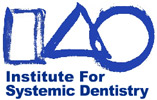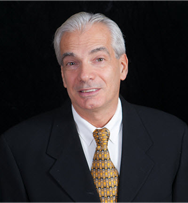Dental Degree
Doctor of Medical Dentistry (DMD), University of Medicine and Dentistry of New Jersey (UMDNJ) (now Rutgers Dental School), 1986
Fellowships
Zirconia Implant Society
Academy of General Dentistry (FAGD)
Institute of Natural Dentistry (FIND)
Practice Philosophy
Dr. Memoli is a general practitioner in the field of Bio-Energetic Holistic Dentistry. Our practice provides general dentistry, dental hygiene cleanings, ceramic (Zirconia or metal-free) implants, ceramic restorations (fillings, crowns, bridges, veneers) safe amalgam removal, acupuncture for TMJ and other procedures.
“Each perfected idea in turn gives birth to the next evolutionary seed”
Holistic Dental Institutes Founded:
Dr. Memoli is the founder of the following dental institutes. His teachings, research, contributions and the evolution of his approach to holistic dentistry took shape in both his practice and through his deep involvement in these institutes.
Institute For Natural Dentistry (IND) 2000-2008
Bringing standardization to holistic dentistry
Co-founder:
Dr. Memoli acquired accreditation for the first holistic institute, which had centers in Newark, N.J., Los Angeles and London.
Dean of Curriculum:
Once the curriculum was established, patients could expect a specific set of standards and competency among those calling themselves “holistic” dentists.
Fellowships:
A fellowship was awarded to those who successfully completed the courses and passed the qualifying exams.
Healing-Focused Holistic Dental Protocols:
The first goal of the institute was to evaluate existing holistic dental procedures, such as amalgam removal, cavitation (NICO) surgery and tooth extraction, with emphasis on detoxification and long-term patient healing. As a result, improved protocols were established with respect to pre- and post-patient preparation of these procedures.
Biocompatibility of Dental Materials:
Working with Jess Clifford, creator of the first dental and orthopedic compatibility test, the Institute emphasized biochemical individuality. This is important because a material may be perfectly safe for one person but toxic to another at the cellular level. Despite this scientific understanding, many untrained (and some trained) holistic dentists were still using the same materials for all patients. The Institute strove to educate both dentists and patients on the true meaning of biocompatibility.
The Promethean Quandary: Standardization of training elevated holistic dentistry to a higher level of competency and reliability. Although quantifiable measures of success were noted in patients’ dental health, systemic healing did not occur. At this point, it was obvious a new paradigm was necessary.
Institute for Systemic Dentistry (2009-2016)
“Thinking outside of the tooth”
Founder and Innovator:
This school for holistic dentists was created to treat the medically challenged patient by focusing on oral systemic interactions (chronic, infections, inflammation and bio-toxins from the mouth). It developed a new methodology to treat dental problems while also addressing and eliminating the root causes contributing to observed systemic conditions.
Development of An Oral-Systemic Algorithm:
The methodology quickly developed into an algorithm. The Oral-Systemic Algorithm included all known “root cause” factors such as nutrition, immune system issues and detoxification systems. Further, it integrated obvious dental and medical conditions that presented themselves. What began to evolve was an enlarged vision of the patient’s total health.
Advances in Biocompatibility:
Once the algorithm determined what must be removed, the question of what goes in was equally perplexing. Clifford emphasized the dual side of biocompatibility; that is, the immunological sensitivity (which his test measured) versus the toxicological side (which no test seemed to be able to assess). Another unsuspected problem was the issue some patients exhibited with ceramics. Although Dr. Clifford’s testing showed that almost all ceramics were acceptable, many patients were having negative effects. Ceramics are an inert material and blood tests could not elucidate individual reactions to ceramics.
The Technology Conundrum:
Our group worked with an extensive array of technology and clinicians in all fields with the goal of predictable health restoration. Most technologies and protocols, however, produced some superficial, short-term healings. True long-term healings, in both dental and systemic levels, did not improve.
The Paradox of Healing:
Despite the addition of new state-of-the-art technologies, supplements and methodologies to the enhanced dental protocols, no advances were made with respect to actual dental regeneration. These additions included all of the following:
~New technologies including 3-D X-rays, lasers, PRF, Piezosurgery and many others.
~Functional medicine testing
~The use of supplements only available through a trained professional
~The most advanced biocompatible testing (the upgraded Clifford Compatibility Test)
~Professional software programs (of all types)
~The highly evolved and adaptive Oral-Systemic Algorithm.
It became painfully obvious that a new paradigm for dental regeneration was necessary to move forward.
The Research Center for Regenerative Dentistry (2018 to Present)
“Bio-energetic Dentistry: A New Paradigm in Healing and Regeneration”
East Meets West:
Although it was obvious Eastern Healing systems would transform healthcare, how this would happen was not as easy to see. I had utilized Eastern techniques before and had seen what appeared to be random and unpredictable healings. Finally, some healing patterns become evident. If these patterns could be standardized or individualized to yield predictable results, a new science could emerge.
Bio-Energetic Dentistry (BED):
Bio-Energetic Dentistry is a new genre in the dental world, as holistic dentistry once was. The practice of energetic-based healing goes back thousands of years, to the advent of acupuncture. More current techniques involving energy healing included applied kinesiology, electro-acupuncture and a variety of computerized biofeedback systems. Dental applications are now addressing previously unsolvable problems such as biocompatibility among ceramic restorations and implants.
Approved Research Center:
The center, which is an integral component of the practice, is under the oversight of the Institute for Health Realities (IHR). The IHR is an FDA-approved Institutional Review Board, which accepts and reviews patient–oriented research in a clinical setting.
Regenerative Dentistry:
This type of dentistry is not mainstream in either traditional or holistic practices and is only a possible within the Bio-Energetic Dentistry paradigm, versus the treatment-oriented approach.
Our Current Research in Regenerative Dentistry:
Our practice is currently conducting research to answer a variety of intriguing questions in regenerative dentistry:
- Dental Nerve Regeneration
Can a protocol be developed to stop dental pain and thereby prevent root canal or extraction?
- Tooth Decay Reversal
Tooth decay in the dentin, unlike the enamel, can destroy a significant part of the tooth and ‘kill’ the pulp. Can we reverse decay or at least stop its progression?
- Dental Pulp Repair
The pulp consists of blood vessels and nerves and will die if decay reaches it. Can a pulp regeneration procedure save all or part of the nerve in an adult tooth?
- Cavitation Site Repair
A study by T. Bouquot using ultrasonography found 98% of extraction sites to be still chronically infected after 30 years. Current holistic procedures (bone graphs and PRF) may grow bone, but that bone is essentially non-vital, meaning it is dead bone. In essence, all bone grafts, with the exception of some donor bone from the jaw, ends up as dead bone. Dead bone attracts bacteria and can become chronically infected. When that happens, it becomes a systemic problem for the patient
- Tooth Extraction Sites with Bone Grafts
Most tooth extraction sites are grafted to provide bone for an implant to be placed at a later date. Is it important for this bone to be alive? See #4 above (Cavitation Site Repair).
- Periodontal Bone Regeneration
Some success has been achieved with the use of lasers, but deep pockets are still a problem for many patients. How can this be addressed?
- DeNovo Tooth Regeneration
If any of the research above is successful, could we ultimately grow new teeth?
The Surgical Center for Ceramic Implants
Our state-of-the-art surgical implant center, completely dedicated to holistic ceramic implant surgery, is conveniently located onsite, within our dental practice. Completed in 2021, this immaculate facility includes a sealed surgical suite to meet and exceed sterilization standards.
Ceramic Implants:
We only utilize ceramic implants. While may practices use only one implant system, we offer five. This allows us to perform the highest standard biocompatibility testing for ceramics. (See Ceramic Dental Implants.)
On-Site Anesthesiologist
Dr. Atlas is a board–certified anesthesiologist. Once you reserve his time prior to the appointment, he will review your medical history in a private phone consultation.
Minimally-Invasive Surgical Technique
Less extensive surgeries result in less post-operative pain and fewer infections. We use homeopathic and ozone treatments during and after the procedure to reduce pain and any risk of infections.
Post–Graduate Courses (Medical and Nutritional)
Dr. Memoli treats many patients with systemic conditions such as cancer, diabetes, chronic infectious diseases (Lyme, co-infections, Epstein-Barr virus, etc.) as well as immunological and other diseases. To work effectively with his patients’ physicians or alternative health practitioners, he needs to understand his patients systemic conditions.
To deepen his understanding of the oral-systemic paradigm, he has studied with the following:
- Institute of Functional Medicine (Certified in Functional Medicine)
This series of courses in integrative medicine focuses on the use of biological functional testing (tests designed for early diagnosis) and nutrition (supplementation and food as a “cure”) to correct pre-disease states.
- Nutritional Therapy in Medical Practice
Led by Dr. Jonathan Wright and Dr. Alan Gaby, this course covered protocol and research in nutrition for practitioners studying nutrition.
- Certified Nutritional Consultant (CNC)
This course provided formal study of nutritional therapy, as well as testing of it, resulting in certification.
- BioSET Allergy Desensitization
Founded and perfected by Dr. Ellen Cutler, BioSET is an allergy desensitization therapy similar to NAET, but it focuses more intensely on medical conditions. Dr. Memoli later applied this to dental material biocompatibility.
- Acupuncture Training
Dr. Memoli is trained in electro-acupuncture according to Voll (EAV), the vegetative reflex test (VEGA test), and other techniques (ART).
- Institute For Health Realities (Sam Queen)
This trained offered a deeper understanding of blood chemistries.
- Training In Neural Therapy
Dr. Memoli has studied a variety of philosophies of this discipline with a number of teachers.
- Continuous Studies
Through various teachers, lectures, research articles and personal experience, Dr. Memoli has also studied homeopathy, herbology, nutrition, neural therapy and cell salt therapy.
Articles and publications
“Systemic Interactions between Dental and Gastroenterological Diseases.” (2011) In G. Mullin MD (Ed.), Integrative Gastroenterology: The Andrew Weil Integrative Medicine Library Series (pp.392-401) Oxford University Press
Read more articles and publications by Dr. Memoli here
Post Graduate Traditional Dental Institutes
Dr. Memoli believes a holistic dentist must be proficient in both traditional and alternative dentistry. He studied with the best teachers of the traditional mindset including:
The Pankey Institute in Key Biscayne, Fla.
Offering what is considered to be the premiere postgraduate study, Pankey teaches dentists in the field of restorative dentistry (fillings), occlusion (the bite, muscles and TMJ) and prosthodontics (tooth replacement options).
The Dawnson Academy in St. Petersburg, Fla.
Dr. Dawson “wrote the book” on occlusion (bite problems) and on how to diagnose and perform complete rehabilitation of the mouth.
The Restorative Practice in Lakeland, Fla.
Dr. Fillastre, a colleague of Dr. Dawson, also ran an institute in which he focused on causes of tooth loss and on many options (excluding implants) for restoring mouths with missing teeth.
The Spear Institute
Dr. Spear offered a course of study in cosmetic dentistry, including the use of ceramics and porcelain restorations. The course also covered treatment planning of complex cases involving multiple specialties, such as restorative-orthodontic cases and periodontal cases.
Creating Restorative Excellence
This institute, run by Dr. Kois, concentrates on diagnosis and the treatment of complex cases. Dr. Kois focuses on mouths with multiple dental problems including bite problems, clenching, periodontal disease and those requiring whole mouth reconstruction, to name a few.
Dr. Mark Piper
Dr. Piper, a medical doctor and oral surgeon, has devised the most comprehensive staging system for TMJ problems.


